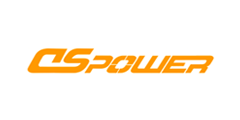Robot Servo: Key Elements Analysis and Selection Guide

In today's rapidly evolving world of robotics, servo play a crucial role as one of the core components of robots. The performance of a servo directly affects the movement control, stability, and precision of a robot. So, when choosing and using a robot servo, what key factors should we consider? This article will provide a detailed analysis.
One, Torque and Speed Torque and speed are important indicators of the performance of a servo motor. Torque indicates the size of the rotational torque that the servo motor can generate, which is directly related to the load weight that the servo motor can drive. Speed refers to the time it takes for the servo motor to move from the starting point to the target position, which determines the response speed and movement posture of the robot. When choosing a servo motor, we need to balance the relationship between torque and speed based on the application scenario and load requirements of the robot and choose the suitable servo motor model.
Two, Accuracy and Stability Accuracy and stability are Heat dissipation refers to the ability of the servo motor to effectively dissipate heat generated during operation, avoiding overheating that may affect the performance and lifespan of the servo motor. Therefore, when choosing a servo motor, we need to pay attention to its power consumption and heat dissipation performance to ensure that the robot can maintain a stable operating state over a long period of time.
Four, Durability and reliability Durability and reliability are important considerations for robot servo motors. Durability refers to the ability of the servo motor to maintain good performance in harsh environments, such as high temperature, low temperature, and humidity. Reliability refers to the servo motor's ability to remain free of faults or damage over a long period of use, ensuring stable operation of the robot; in particular, robots are subject to high impact resistance, and they are likely to encounter reverse impact forces during operation, especially in service robots. In this case, the clutch series products from Desheng will be a very practical solution, effectively reducing damage to gear groups. To ensure the stability and reliability of the robot, we need to choose servo motor products that have undergone rigorous testing and verification, and pay attention to maintenance and maintenance during use.
Five, Price and Value for Money Price and value for money are important factors to consider when choosing a robot servo. The price difference between different brands and models of servos is significant, and we need to choose servo products with good value for money based on our budget and needs. At the same time, we also need to pay attention to the fact that cheap servos may have performance and durability issues, so we cannot choose servos solely based on price.
Summary: In summary, when choosing and using robot servos, we need to pay attention to key factors such as torque and speed, precision and stability, power consumption and heat dissipation, durability and reliability, and price and cost-effectiveness. By weighing these factors, we can select suitable servo products for our robot applications and provide strong support for the movement control and performance improvement of robots.
- +1 Like
- Add to Favorites
Recommend
- Overview of the Application of Servos in Different Types of Robots
- TDK Shakes Up Robotics Market with Next-generation SmartRobotics™ Platform, TDK RoboKit1
- How to Select Suitable Remote Control Servos for Programming Robots?
- DSpower Sweeping Robot Servo with High Torque Enables Precise Movement Control and Efficient Cleaning Operations in Sweeping Robots
- Robotics Specialist Innok Robotics Uses MTi-30 motion tracker from Xsens In its AGVs For Outdoor Space
- Renesas Provides A Small Industrial Robot Solution for High Precision Small Industrial Robotic Control
- YinHang and Newsight Imaging collaborate for mass production of service,the first batch of 1000 robots are already on the market
- TDK Sensors Enhance The New Purpose-built Qualcomm® Robotics RB3 Platform for Consumer, Enterprise and Industrial Robot Manufacturers and Developers
This document is provided by Sekorm Platform for VIP exclusive service. The copyright is owned by Sekorm. Without authorization, any medias, websites or individual are not allowed to reprint. When authorizing the reprint, the link of www.sekorm.com must be indicated.





























































































































































































































































































































































































































































































































































































































































































































































































































































































